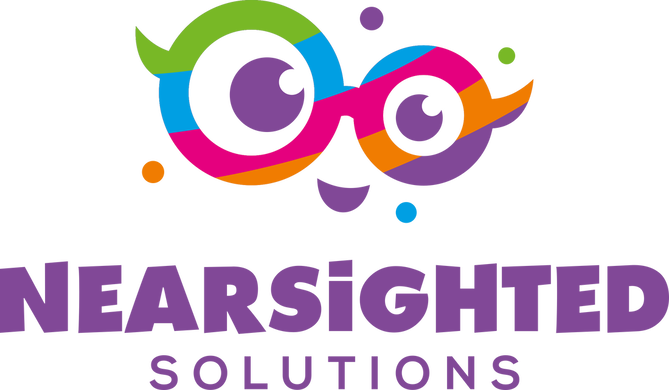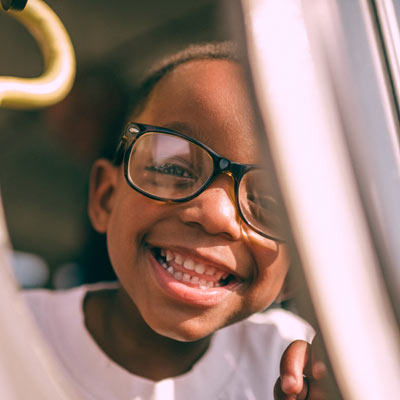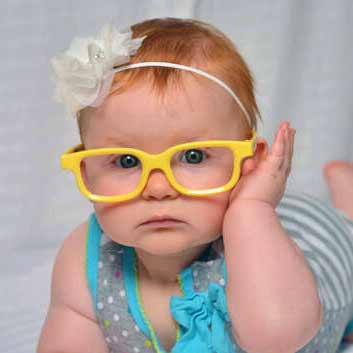
Myopia Control Solution Center
Our team of specialists is ready to assist with managing your myopia. We are a part of The Eye Center of Pembroke Pines, proudly serving the South Florida area for almost 50 years.
What is Myopia?
Myopia is the inability to see images clearly at a distance. It is also known as nearsightedness and is the most common vision problem among children and young adults.
Myopia occurs when the eye grows too long, causing light to focus in front of the retina instead of directly on it. This makes distant objects appear blurry, while up-close vision stays clear—hence the name “nearsightedness.” Glasses and contact lenses help by refocusing light onto the retina, so people with myopia can see clearly again.
This type of vision problem typically develops during childhood and progresses gradually and quickly, especially in kids younger than 18. The most common symptoms of myopia include squinting, headaches, and eye strain.
The Long-Term Risks of Myopia
The rate of myopia worldwide is increasing rapidly. Excessive use of electronics and reduced time spent outdoors can lead to progressive vision loss and issues.
Myopia also tends to run in families, but even if neither parent is myopic, the chances that your child can have myopia are still 25%.
Long-term, increasing amounts of myopia can lead to an increased risk of retinal tears, retinal detachments, myopic maculopathy, glaucoma, and even cataracts. Because of the potential for larger problems, it is critical to start myopia control early on.



Myopia Control
Myopia control is a term used to describe specific treatments that slow down myopia progression in children. Myopia control is important because it may help reduce the risk of vision-threatening complications associated with high amounts of myopia—including retinal detachments, glaucoma, and cataracts.
There are four primary methods of myopia treatment:
- Atropine eye drops
- Multifocal contact lenses
- Orthokeratology (ortho-k)
- Multifocal glasses
The best form of myopia control for someone will depend on their specific needs and preferences.
Types of Myopia Management We Offer
Evidence from scientific literature shows that proper myopia management can help slow its progression. These methods include using certain eye drops or specific contact lenses.
To clarify, the eye drops and contact lenses are FDA-approved, but not all of them are specifically approved for myopia control. When a treatment method is not FDA-approved for a particular use, it’s called “off-label.” That doesn’t mean it’s unsafe—off-label use can still be perfectly safe and effective under the guidance of an eye doctor.
The following methods are used to potentially slow the progression of myopia
Atropine drops
Atropine is a medication that reduces the ability to focus on things at close distances and, coincidentally, dilates the pupil. Low concentrations of these eye drops have been shown to slow myopia progression while having almost no side effects.
After allowing time to adapt, less than 10% of children complained of any side effects. The main side effects include sensitivity to light, difficulty focusing up close, and headaches. Atropine drops are safe and are considered off-label when used for myopia control.
Daytime wear of multifocal soft contact lenses
Multifocal lenses are normally used to help adults over 40 years old see clearly up close as well as at a distance. Children can use these lenses exactly like any other daily contact lens with no additional risk and minimal visual disturbance. The difference is that the FDA has recently approved one brand (MiSight lenses) for myopia control. Other brands can be just as safe but are considered off-label for myopia control (e.g., NaturalVue mutlifocal contact lenses).
Overnight wear of ortho-k lenses
Corneal reshaping lenses are worn during sleeping hours only and removed when waking up the next day. They correct myopia by gently reshaping the cornea and temporarily canceling out a patient’s prescription.
If you stop using ortho-k lenses, vision will return to its previous state. The first two weeks of wear will be when the most vision disturbances are noted. However, after fully adapting, the patient will see clearly for the whole day without any other correction needed.
The risks of complications with overnight wear of lenses are very low, though technically slightly higher than with daily wear only. Corneal reshaping lenses are safe and considered off-label for myopia control.
The above options are the currently available myopia treatment methods that have been widely researched and shown to have the best chance of reducing the progression of myopia. When discussing different treatment options with your eye doctor during an eye exam, consider the benefits and risks involved with each treatment and remember that there is no guarantee of success.
You may also continue with traditional glasses or standard contact lenses, but these will not slow myopia progression.
Find the Right Myopia Management Option
Some myopia control options may be better than others, and the best one for you or your child will depend on several factors. As part of our Nearsighted Solutions program, we can educate you on these myopia management options and help you decide on the best option for you. If you are interested in learning more or getting started, schedule an appointment today.
